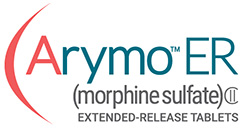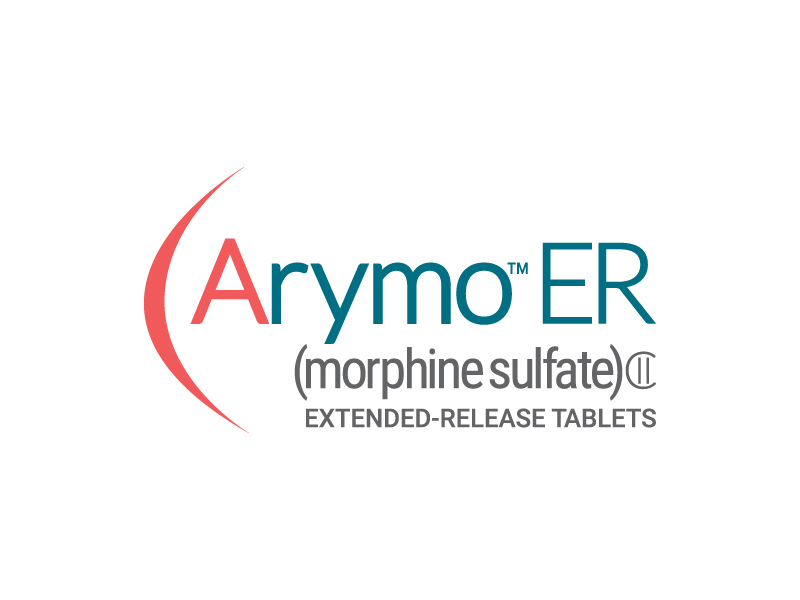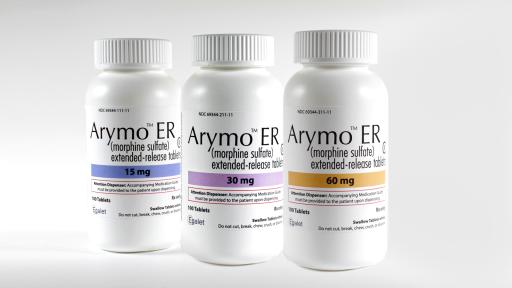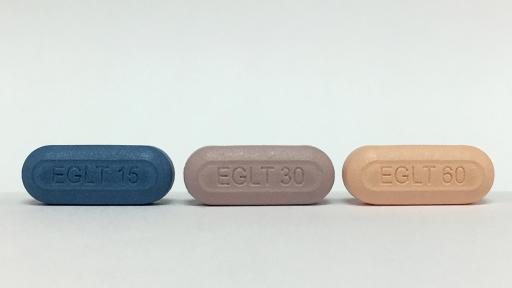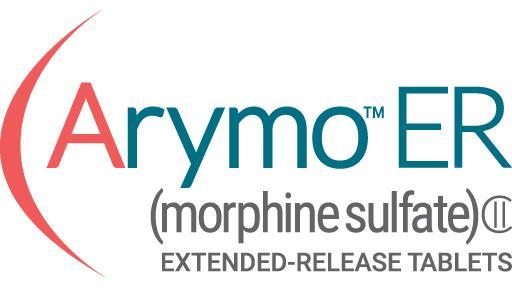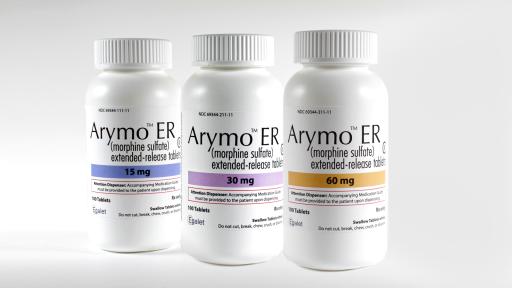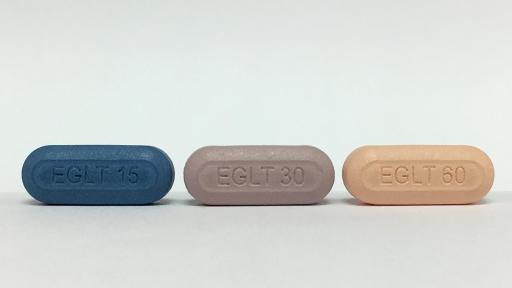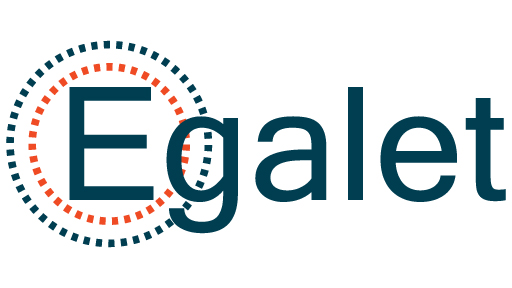Media Contact:
E. Blair Clark-Schoeb
[email protected]
917.432.9275
Egalet Receives FDA Approval for ARYMO™ ER (morphine sulfate) C-II, an Extended-Release Morphine Product Formulated with Abuse-Deterrent Properties for Treatment of Chronic Pain
--Approval triggers $40 million from second tranche of secured debt financing--
--Conference call to be hosted Monday, January 9, at 8:15 PM EST--
PR Newswire, Wayne, Penn. – January 9, 2017
Egalet Corporation (Nasdaq: EGLT) (“Egalet”), a fully integrated specialty pharmaceutical company focused on developing, manufacturing and commercializing innovative treatments for pain and other conditions, today announced that the U.S. Food and Drug Administration (FDA) has approved ARYMO™ ER (morphine sulfate) extended-release (ER) tablets C-II for the management of pain severe enough to require daily, around-the-clock, long-term opioid treatment and for which alternative treatment options are inadequate.
ARYMO ER is the first approved product developed using Egalet’s proprietary Guardian™ Technology—a physical and chemical barrier approach to abuse deterrence without the use of an opioid antagonist—creating tablets that are difficult to manipulate for the purpose of misuse and abuse. Results from in vitro testing demonstrated that ARYMO ER tablets, in comparison to non-abuse-deterrent morphine sulfate extended-release tablets, have increased resistance to cutting, crushing, grinding or breaking using a variety of tools. Due to its physical and chemical properties, ARYMO ER is expected to make abuse by injection difficult.
“Given the need for treatments for the millions of Americans living with chronic pain, the growing problem of prescription abuse and the fact that we know diversion is a huge problem, it is important that we have more abuse-deterrent treatment options, like ARYMO ER, if and when these pain treatments end up in the wrong hands,” said Nathaniel Katz, M.D., neurologist and pain specialist as well as founder and president of Analgesic Solutions.
ARYMO ER has been approved in three dosage strengths: 15 mg, 30 mg and 60 mg. The U.S. commercial launch, utilizing Egalet’s established commercial infrastructure, is planned for the first quarter 2017.
“With the majority of ER opioids in easy to abuse forms, it is important that healthcare professionals have additional treatment options like ARYMO ER that are resistant to different methods of manipulation using a variety of tools,” said Bob Radie, president and chief executive officer of Egalet. “ARYMO ER has physical and chemical properties expected to make abuse by injection difficult, which is important given it is the most common non-oral route of morphine abuse and the most dangerous. With our commercial organization in place, we are ready to launch ARYMO ER in the first quarter of 2017.”
The FDA approval of ARYMO ER triggered $40 million in new funding to Egalet from the second tranche of the senior secured debt financing previously announced on August 31, 2016. In connection with the second tranche, the note purchasers will also receive a royalty right, representing a right to receive an aggregate 1.5% royalty payment on net sales of ARYMO ER, as further described in Egalet’s current report on form 8-K filed on September 1, 2016.
Conference Call Information
The approval of ARYMO ER will be discussed on a conference call today Monday, January 9, 2017:
Time: 8:15 p.m. EST
Webcast (live and archived): http://egalet.investorroom.com/eventsandwebcasts
Dial-in numbers:
- 1-888-346-2615 (domestic)
- 1-412-902-4253 (international)
Replay numbers:
- 1-877-344-7529 (domestic)
- 1-412-317-0088 (international)
Conference number: 10093736
Guardian™ Technology
Egalet’s Guardian Technology has many applications and has been used to develop abuse-deterrent forms of commonly abused prescription medications. Egalet’s proprietary Guardian Technology is a polymer matrix tablet technology that utilizes a novel application of the well characterized manufacturing process of injection molding, which results in tablets that are hard and difficult to manipulate for misuse and abuse. This approach offers the ability to design tablets with controlled-release profiles as well as physical and chemical properties that have been demonstrated to resist both common and rigorous methods of manipulation. Tablets manufactured with Guardian Technology have been shown to have increased resistance to physical methods of manipulation, such as cutting, crushing, grinding or breaking, using a variety of mechanical and electrical tools. They are also resistant to chemical manipulation and attempts at extraction and turn into a viscous hydrogel on contact with liquid, making syringeability very difficult.
About Egalet
Egalet, a fully integrated specialty pharmaceutical company, is focused on developing, manufacturing and commercializing innovative treatments for pain and other conditions. Egalet has three approved products: ARYMO™ ER (morphine sulfate) extended-release tablets for oral use only –CII, developed using Egalet’s proprietary Guardian™ Technology, OXAYDO® (oxycodone HCI, USP) tablets for oral use only –CII and SPRIX® (ketorolac tromethamine) Nasal Spray. Using Guardian Technology Egalet is developing a pipeline of clinical-stage, product candidates including Egalet-002, an abuse-deterrent, extended-release, oral oxycodone formulation for the management of pain severe enough to require daily, around-the-clock, long-term opioid treatment and for which alternative treatment options are inadequate. Guardian Technology can be applied broadly across different classes of pharmaceutical products and can be used to develop combination products that include multiple active pharmaceutical ingredients with similar or different release profiles. For full prescribing information on ARYMO ER, including the boxed warning and medication guide, please visit arymoer.com. For full prescribing information on SPRIX, including the boxed warning and medication guide, please visit sprix.com. For full prescribing information on OXAYDO, please visit oxaydo.com. For additional information on Egalet, please visit egalet.com.
Safe Harbor
Statements included in this press release that are not historical in nature and contain the words “anticipate,” “believe,” “estimate,” “expect,” “intend,” “may,” “plan,” “predict,” “project,” “suggest,” “target,” “potential,” “will,” “would,” “could,” “should,” “continue,” “look forward to” and other similar expressions are "forward-looking statements" within the meaning of the Private Securities Litigation Reform Act of 1995. These forward-looking statements are based on management’s current expectations, and are subject to known and unknown uncertainties and risks. Actual results could differ materially from those discussed due to a number of factors, including, but not limited to: the success of Egalet’s clinical trials, including the timely recruitment of trial subjects and meeting the timelines therefor; Egalet’s ability to obtain regulatory approval of its product candidates; Egalet’s ability to maintain the intellectual property position of its products and product candidates; Egalet’s ability to identify and reliance upon qualified third parties to manufacture its products; Egalet’s ability to service its debt obligations; Egalet’s ability to raise additional funds to execute its business plan and growth strategy on terms acceptable to Egalet, if at all; Egalet’s ability to find and hire qualified sales professionals; the receptivity in the marketplace and among physicians to Egalet’s products; the success of products which compete with Egalet’s that are or become available; general market conditions; and the Risk Factors set forth in Egalet’s Annual Report on Form 10-K and Quarterly Reports on Form 10-Q filed with the United States Securities and Exchange Commission (SEC) and in other filings Egalet makes with the SEC from time to time. In addition, the forward-looking statements included in this press release represent Egalet’s views only as of the date hereof. Egalet anticipates that subsequent events and developments may cause its views to change. While Egalet may elect to update these forward-looking statements at some point in the future, it specifically disclaims any obligation to update or revise any forward-looking-statements contained in this press release whether as a result of new information or future events, except as may be required by law.
Important Safety Information for ARYMO™ ER (morphine sulfate) extended-release tablets, for oral use C-II
WARNING: ADDICTION, ABUSE, and MISUSE; LIFE-THREATENING RESPIRATORY DEPRESSION; ACCIDENTAL INGESTION; NEONATAL OPIOID WITHDRAWAL SYNDROME; AND RISKS FROM CONCOMITANT USE WITH BENZODIAZEPINES OR OTHER CNS DEPRESSANTS
Addiction, Abuse, and Misuse
ARYMO™ ER exposes patients and other users to the risks of opioid addiction, abuse, and misuse, which can lead to overdose and death. Assess each patient’s risk prior to prescribing ARYMO ER, and monitor all patients regularly for the development of these behaviors or conditions
Life-Threatening Respiratory Depression
Serious, life-threatening, or fatal respiratory depression may occur with use of ARYMO ER. Monitor for respiratory depression, especially during initiation of ARYMO ER or following a dose increase. Instruct patients to swallow ARYMO ER tablets whole; crushing, chewing, or dissolving ARYMO ER tablets can cause rapid release and absorption of a potentially fatal dose of morphine
Accidental Ingestion
Accidental ingestion of even one dose of ARYMO ER, especially by children, can result in a fatal overdose of morphine.
Neonatal Opioid Withdrawal Syndrome
Prolonged use of ARYMO ER during pregnancy can result in neonatal opioid withdrawal syndrome, which may be life-threatening if not recognized and treated, and requires management according to protocols developed by neonatology experts. If opioid use is required for a prolonged period in a pregnant woman, advise the patient of the risk of neonatal opioid withdrawal syndrome and ensure that appropriate treatment will be available.
Risks From Concomitant Use With Benzodiazepines Or Other CNS Depressants
Concomitant use of opioids with benzodiazepines or other central nervous system (CNS) depressants, including alcohol, may result in profound sedation, respiratory depression, coma, and death.
- Reserve concomitant prescribing of ARYMO ER and benzodiazepines or other CNS depressants for use in patients for whom alternative treatment options are inadequate.
- Limit dosages and durations to the minimum required.
- Follow patients for signs and symptoms of respiratory depression and sedation.
Indications
ARYMO ER is indicated for the management of pain severe enough to require daily, around-the-clock, long-term opioid treatment and for which alternative treatment options are inadequate.
Limitations of Use
- Because of the risks of addiction, abuse, and misuse with opioids, even at recommended doses, and because of the greater risks of overdose and death with extended-release opioid formulations, reserve ARYMO ER for use in patients for whom alternative treatment options (e.g., non-opioid analgesics or immediate-release opioids) are ineffective, not tolerated, or would be otherwise inadequate to provide sufficient management of pain.
- ARYMO ER is not indicated as an as-needed (prn) analgesic.
Contraindications
ARYMO ER is contraindicated in patients with: significant respiratory depression; acute or severe bronchial asthma in an unmonitored setting or in the absence of resuscitative equipment; concurrent use of monoamine oxidase inhibitors (MAOIs) or use within the last 14 days, known or suspected gastrointestinal obstruction, including paralytic ileus; hypersensitivity (e.g., anaphylaxis) to morphine.
Warnings and Precautions
Addiction, Abuse, and Misuse: ARYMO ER contains morphine, a Schedule II controlled substance. As an opioid, ARYMO ER exposes its users to the risks of addiction, abuse, and misuse. As extended-release products such as ARYMO ER deliver the opioid over an extended period of time, there is a greater risk for overdose and death due to the larger amount of morphine present.
Life-Threatening Respiratory Depression: Serious, life-threatening, or fatal respiratory depression has been reported with the use of opioids, even when used as recommended. Respiratory depression, if not immediately recognized and treated, may lead to respiratory arrest and death. Management of respiratory depression may include close observation, supportive measures, and use of opioid antagonists, depending on the patient’s clinical status. Carbon dioxide (CO2) retention from opioid-induced respiratory depression can exacerbate the sedating effects of opioids.
While serious, life-threatening, or fatal respiratory depression can occur at any time during the use of ARYMO ER, the risk is greatest during the initiation of therapy or following a dosage increase. Closely monitor patients for respiratory depression, especially within the first 24-72 hours of initiating therapy with and following and dosage increases with ARYMO ER.
To reduce the risk of respiratory depression, proper dosing and titration of ARYMO ER are essential. Overestimating the ARYMO ER dose when converting patients from another opioid product can result in a fatal overdose with the first dose.
Accidental ingestion of even one dose of ARYMO ER, especially by children, can result in respiratory depression and death due to an overdose of morphine.
Neonatal Opioid Withdrawal Syndrome: Prolonged use of ARYMO ER during pregnancy can result in withdrawal in the neonate. Neonatal opioid withdrawal syndrome, unlike opioid withdrawal syndrome in adults, may be life-threatening if not recognized and treated, and requires management according to protocols developed by neonatology experts. Observe newborns for signs of neonatal opioid withdrawal syndrome and manage accordingly. Advise pregnant women using opioids for a prolonged period of the risk of neonatal opioid withdrawal syndrome and ensure that appropriate treatment will be available.
Risks from Concomitant Use with Benzodiazepines or Other CNS Depressants: Profound sedation, respiratory depression, coma, and death may result from the concomitant use of ARYMO ER with benzodiazepines or other CNS depressants (e.g., non-benzodiazepine sedatives/hypnotics, anxiolytics, tranquilizers, muscle relaxants, general anesthetics, antipsychotics, other opioids, alcohol). Because of these risks, reserve concomitant prescribing of these drugs for use in patients for whom alternative treatment options are inadequate.
Observational studies have demonstrated that concomitant use of opioid analgesics and benzodiazepines increases the risk of drug-related mortality compared to use of opioid analgesics alone. Because of similar pharmacological properties, it is reasonable to expect similar risk with the concomitant use of other CNS depressant drugs with opioid analgesics.
Life-Threatening Respiratory Depression in Patients with Chronic Pulmonary Disease or in Elderly, Cachectic, or Debilitated Patients: The use of ARYMO ER in patients with acute or severe bronchial asthma in an unmonitored setting or in the absence of resuscitative equipment is contraindicated.
Patients with Chronic Pulmonary Disease: ARYMO ER-treated patients with significant chronic obstructive pulmonary disease or cor pulmonale, and those with a substantially decreased respiratory reserve, hypoxia, hypercapnia, or pre-existing respiratory depression are at increased risk of decreased respiratory drive including apnea, even at recommended dosages of ARYMO ER.
Elderly, Cachetic, or Debilitated Patients: Life-threatening respiratory depression is more likely to occur in elderly, cachectic, or debilitated patients because they may have altered pharmacokinetics or altered clearance compared to younger, healthier patients.
Monitor such patients closely, particularly when initiating and titrating ARYMO ER and when ARYMO ER is given concomitantly with other drugs that depress respiration. Alternatively, consider the use of non-opioid analgesics in these patients.
Interaction with Monoamine Oxidase Inhibitors: Monoamine oxidase inhibitors (MAOIs) may potentiate the effects of morphine, including respiratory depression, coma, and confusion. ARYMO ER should not be used in patients taking MAOIs or within 14 days of stopping such treatment.
Adrenal Insufficiency: Cases of adrenal insufficiency have been reported with opioid use, more often following greater than one month of use. Presentation of adrenal insufficiency may include non-specific symptoms and signs including nausea, vomiting, anorexia, fatigue, weakness, dizziness, and low blood pressure.
Severe Hypotension: ARYMO ER may cause severe hypotension including orthostatic hypotension and syncope in ambulatory patients. There is an increased risk in patients whose ability to maintain blood pressure has already been compromised by a reduced blood volume or concurrent administration of certain CNS depressant drugs (e.g., phenothiazines or general anesthetics). Monitor these patients for signs of hypotension after initiating or titrating the dose of ARYMO ER. In patients with circulatory shock, ARYMO ER may cause vasodilation that can further reduce cardiac output and blood pressure. Avoid the use ARYMO ER in patients with circulatory shock.
Risks of Use in Patients with Increased Intracranial Pressure, Brain Tumors, Head Injury, or Impaired Consciousness: In patients who may be susceptible to the intracranial effects of CO2 retention (e.g., those with evidence of increased intracranial pressure or brain tumors), ARYMO ER may reduce respiratory drive, and the resultant CO2 retention can further increase intracranial pressure. Monitor such patients for signs of sedation and respiratory depression, particularly when initiating therapy with ARYMO ER.
Opioids may also obscure the clinical course in a patient with a head injury. Avoid the use of ARYMO ER in patients with impaired consciousness or coma.
Difficulty in Swallowing and Risk for Obstruction in Patients at Risk for a Small Gastrointestinal Lumen: Moistened ARYMO ER tablets may become sticky leading to difficulty in swallowing the tablets. Patients could experience choking, gagging, regurgitation and tablets stuck in the throat. Instruct patients not to pre-soak, lick, or otherwise wet ARYMO ER tablets prior to placing in the mouth, and to take one tablet at a time with enough water to ensure complete swallowing immediately after placing in the mouth.
Tablet stickiness and swelling may also predispose patients to intestinal obstruction and exacerbation of diverticulitis. Patients with underlying GI disorders such as esophageal cancer or colon cancer with a small gastrointestinal lumen are at greater risk of developing these complications. Consider use of an alternative analgesic in patients who have difficulty swallowing and patients at risk for underlying GI disorders resulting in a small gastrointestinal lumen.
Risks of Use in Patients with Gastrointestinal Conditions: ARYMO ER is contraindicated in patients with gastrointestinal obstruction, including paralytic ileus. The morphine in ARYMO ER may cause spasm of the sphincter of Oddi. Opioids may cause increases in the serum amylase. Monitor patients with biliary tract disease, including acute pancreatitis, for worsening symptoms.
Increased Risk of Seizures in Patients with Seizure Disorders: The morphine in ARYMO ER may increase the frequency of seizures in patients with seizure disorders, and may increase the risk of seizures occurring in other clinical settings associated with seizures. Monitor patients with a history of seizure disorders for worsened seizure control during ARYMO ER therapy.
Withdrawal: Avoid the use of mixed agonist/antagonist (i.e., pentazocine, nalbuphine, and butorphanol) or partial agonist (e.g., buprenorphine) analgesics in patients who have received or are receiving a course of therapy with a full opioid agonist analgesic, including ARYMO ER. In these patients, mixed agonists/antagonist and partial agonist analgesics may reduce the analgesic effect and/or may precipitate withdrawal symptoms.
When discontinuing ARYMO ER, gradually taper the dose. Do not abruptly discontinue ARYMO ER.
Risks of Driving and Operating Machinery: ARYMO ER may impair the mental or physical abilities needed to perform potentially hazardous activities such as driving a car or operating machinery. Warn patients not to drive or operate dangerous machinery unless they are tolerant to the effects of ARYMO ER and know how they will react to the medication.
Adverse Reactions
In clinical trials, the most common adverse reactions with morphine sulfate extended-release formulations were constipation, dizziness, sedation, nausea, vomiting, sweating, dysphoria, and euphoric mood.
Additional Drug Interactions
Serotonergic Drugs: The concomitant use of opioids with other drugs that affect the serotonergic neurotransmitter system has resulted in serotonin syndrome.
Mixed Agonist/Antagonist and Partial Agonist Opioid Analgesics: May reduce the analgesic effect of ARYMO ER and/or precipitate withdrawal symptoms; avoid concomitant use.
Muscle Relaxants: Morphine may enhance the neuromuscular blocking action of skeletal muscle relaxants and produce an increased degree of respiratory depression.
Cimetidine: The concomitant use of cimetidine can potentiate morphine effects and increase risk of hypotension, respiratory depression, profound sedation, coma, and death.
Diuretics: Opioids can reduce the efficacy of diuretics by inducing the release of antidiuretic hormone.
Anticholinergic Drugs: The concomitant use of anticholinergic drugs may increase risk of urinary retention and/or severe constipation, which may lead to paralytic ileus.
P-Glycoprotein (P-gp) Inhibitors: The concomitant use of P-gp inhibitors can increase the exposure to morphine by about two-fold and can increase risk of hypotension, respiratory depression, profound sedation, coma, and death.
Use in Specific Populations
Pediatrics: The safety and effectiveness in pediatric patients below the age of 18 have not been established.
Geriatrics: The pharmacokinetics of ARYMO ER have not been studied in elderly patients. Elderly patients (aged 65 years or older) may have increased sensitivity to morphine.
Hepatic Impairment: Morphine pharmacokinetics have been reported to be significantly altered in patients with cirrhosis. Start these patients with a lower than usual dosage of ARYMO ER and titrate slowly while monitoring for signs of respiratory depression, sedation, and hypotension.
Renal Impairment: Morphine pharmacokinetics are altered in patients with renal failure. Start these patients with a lower than usual dosage of ARYMO ER and titrate slowly while monitoring for signs of respiratory depression, sedation, and hypotension
Overdosage
Acute overdosage with morphine can be manifested by respiratory depression, somnolence progressing to stupor or coma, skeletal muscle flaccidity, cold and clammy skin, constricted pupils, and, in some cases, pulmonary edema, bradycardia, hypotension, partial or complete airway obstruction, atypical snoring, and death. Marked mydriasis rather than miosis may be seen due to severe hypoxia in overdose situations.
Please see Full Prescribing Information, including BOXED WARNING and MEDICATION GUIDE.
Investor and Media Contact:
E. Blair Clark-Schoeb
Senior Vice President, Communications
Email: [email protected]
Tel: 917-432-9275
@US_FDA approved ARYMO™ ER, an ER morphine, formulated with abuse-deterrent properties for treatment of chronic pain http://egalet.com/ Tweet

